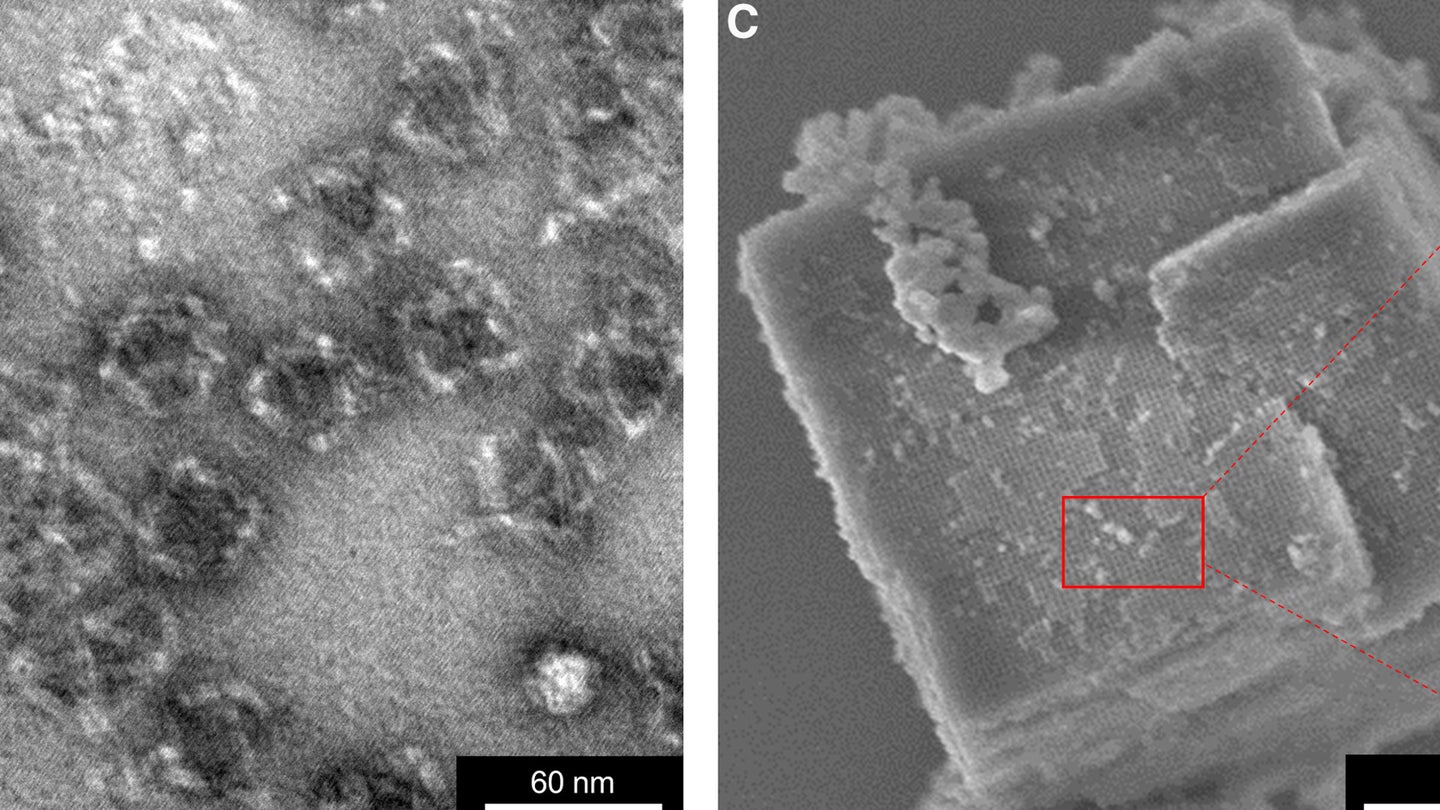
One of the world’s strongest structures could be one of its smallest: Collaborators from University of Connecticut, Columbia University, and Brookhaven National Lab have developed a new nanomaterial composed of DNA strands coated in flawless glass. At proportionally four times stronger and five times lighter than steel, the minuscule latticework structures could provide a template for a new wave of extremely durable and lightweight vehicles, body armor, and countless other products.
As detailed recently in Cell Reports Physical Science, the team first connected multiple portions of self-assembling DNA to form a nanostructure framework akin to a building’s support beams. They then coated the enjoined DNA strands with a glass-like material only a few hundred atoms thick, leaving relatively large empty spaces akin to rooms in a house. These spaces allowed the resulting nanomaterial to remain extremely lightweight, while the glass reinforced its durability.
[Related: Microscopic mesh could be the key to lighter, stronger body armor.]
“The ability to create designed 3D framework nanomaterials using DNA and mineralize them opens enormous opportunities for engineering mechanical properties,” explains nanomaterials scientist Oleg Gang and paper co-author via UConn’s announcement.
Glass may not be the first material that comes to mind when imagining something strong and resilient, but that’s because glass structures, at most tangible scales, are structurally compromised in little ways that add up over time. Chips, cracks, and scratches can all cause glass to eventually shatter—but completely flawless glass is another story entirely. As UConn’s announcement notes, a flawless cubic centimeter of glass is capable of withstanding a whopping 10 tons of pressure.
Finding a flawless cubic centimeter of glass is easier said than done, but when a piece of glass is less than a micrometer thick, it is almost always flawless. The DNA nanostructures therefore lend themselves to these glass coatings that retain their nearly unequaled durability. Scale these DNA superstrands up, and you could eventually see material with extremely promising applications—it’s much more feasible, for example, to build a lighter and stronger electric vehicle by focusing on its exterior frame instead of trying to make its rechargeable battery smaller or more powerful.
Moving forward, the team plans to experiment with carbide ceramic coatings in lieu of glass to make potentially even stronger nanostructures. Meanwhile, they also hope to try out different DNA shapes to see which works best for such a material. Eventually, these optimized structures could underlay some of the lightest, strongest products in the world. But what else would you expect from something so “flawless?”
The post These super strong nanostructures are made of glass-coated DNA appeared first on Popular Science.
Articles may contain affiliate links which enable us to share in the revenue of any purchases made.
from | Popular Science https://ift.tt/H9KT0qB



0 Comments